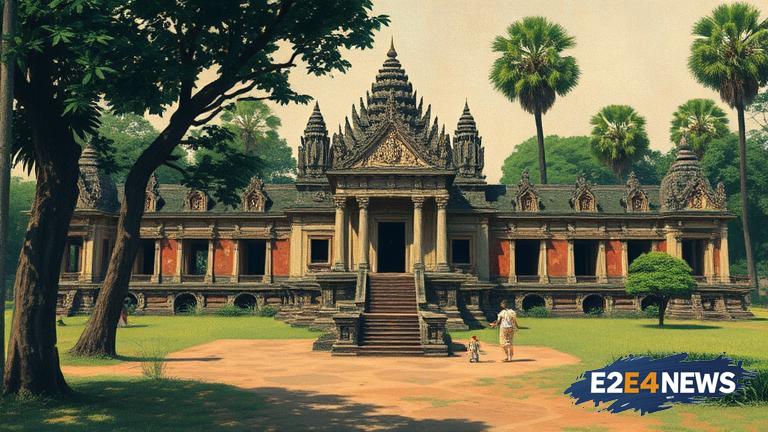The UNESCO World Heritage Committee has officially recognized two sites in Cambodia, the S21 prison and the Killing Fields of Choeung Ek, as significant cultural and historical landmarks. These sites serve as a reminder of the atrocities committed by the Khmer Rouge regime, which ruled Cambodia from 1975 to 1979 and was responsible for the deaths of an estimated 1.7 to 2.2 million people, out of a population of approximately 8 million, through executions, forced labor, and starvation. The S21 prison, also known as Tuol Sleng, was a former high school that was converted into a prison and interrogation center, where thousands of people were tortured and killed. The Killing Fields of Choeung Ek, located just outside of Phnom Penh, is one of the many sites where the Khmer Rouge carried out mass executions, with estimates suggesting that over 17,000 people were killed there. The addition of these sites to the UNESCO World Heritage List is seen as a significant step towards acknowledging and preserving Cambodia’s history, and promoting education and remembrance about the atrocities committed during the Khmer Rouge regime. The recognition is also expected to boost tourism in the country, with many visitors already drawn to the sites to learn about Cambodia’s past and pay their respects to the victims. However, some have raised concerns that the increased tourism could lead to the commercialization of the sites, and potentially disrespect the memories of the victims. The Cambodian government has pledged to ensure that the sites are preserved and respected, and that the revenue generated from tourism is used to support the local community and promote education about the country’s history. The UNESCO recognition is also seen as a way to promote reconciliation and healing in Cambodia, where many survivors of the Khmer Rouge regime are still alive today. The sites will be protected and preserved under the UNESCO World Heritage Convention, which aims to identify and protect cultural and natural heritage sites around the world. The convention also provides funding and technical assistance to help countries preserve and manage their heritage sites. In addition to the S21 prison and the Killing Fields of Choeung Ek, several other sites in Cambodia have been recognized by UNESCO, including the ancient temple complex of Angkor Wat, which is one of the most famous tourist destinations in the country. The recognition of the Khmer Rouge sites is seen as a significant step towards promoting a more nuanced understanding of Cambodia’s history, and acknowledging the complexities and challenges of the country’s past. It is also expected to promote greater awareness and education about the atrocities committed during the Khmer Rouge regime, both within Cambodia and around the world. The UNESCO World Heritage Committee has recognized over 1,000 sites around the world, including cultural and natural landmarks, and the recognition of the Khmer Rouge sites in Cambodia is seen as a significant addition to this list. The committee has also recognized several other sites related to human rights and social justice, including the Auschwitz-Birkenau concentration camp in Poland and the Robben Island prison in South Africa, where Nelson Mandela was imprisoned for 18 years. The recognition of the Khmer Rouge sites is seen as a way to promote greater awareness and understanding of the importance of human rights and social justice, and to acknowledge the significance of these sites in promoting education and remembrance about the atrocities committed during the Khmer Rouge regime.
